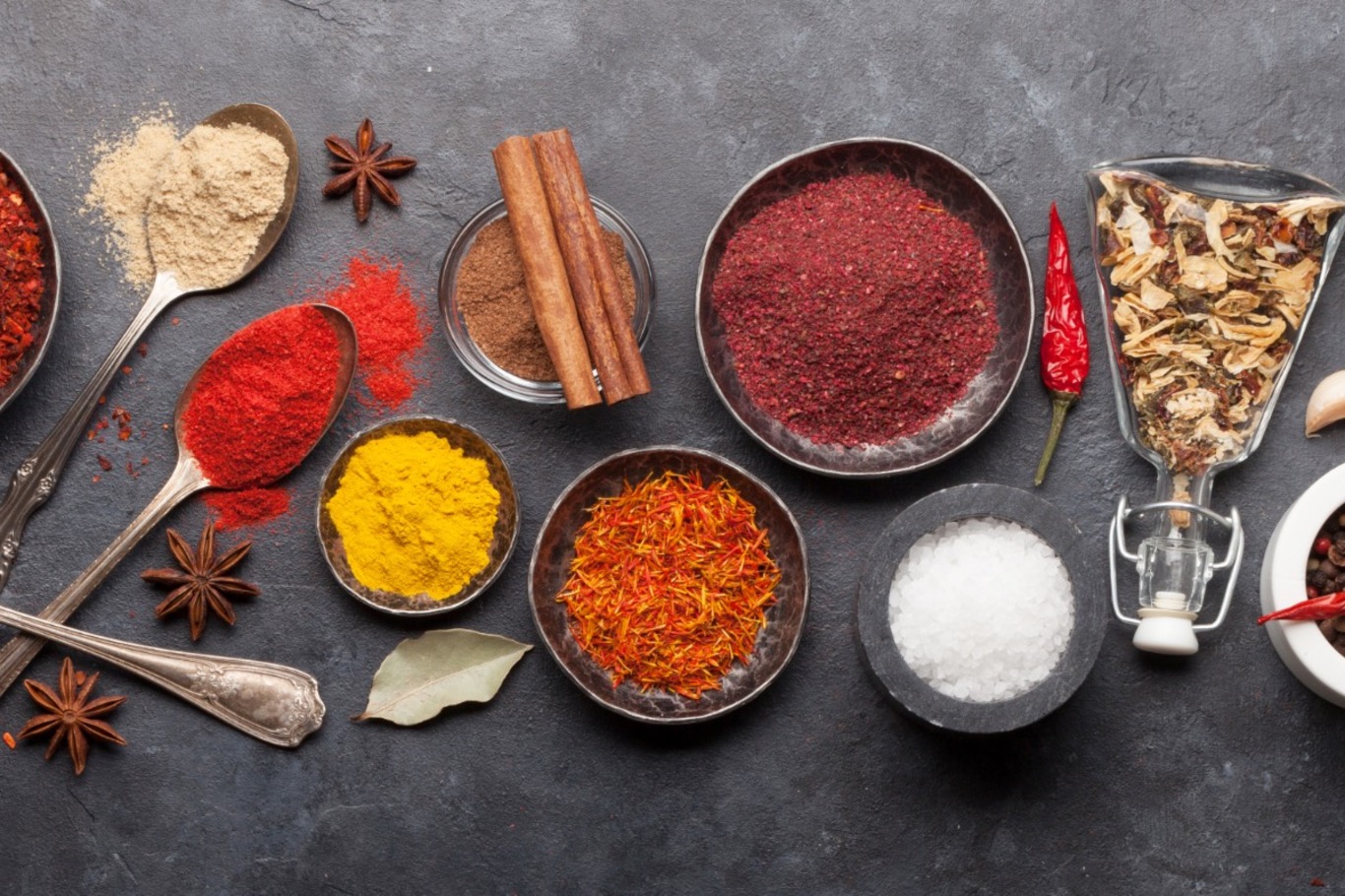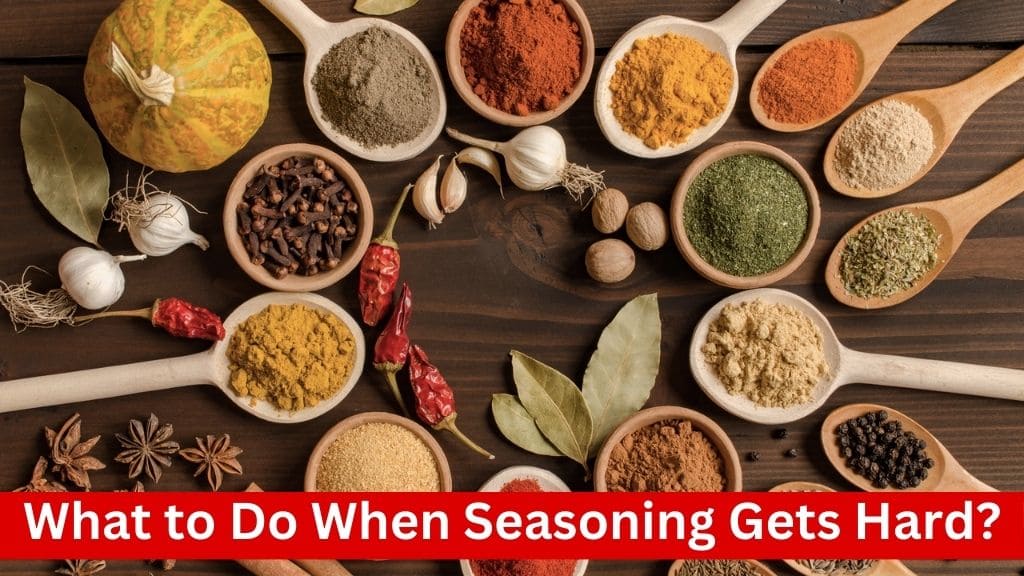Seasonings are an essential component of cooking, adding depth, flavor, and aroma to dishes. However, it can be frustrating when your seasoning hardens, making it difficult to use and compromising its flavor. In this comprehensive guide, we’ll explore the reasons why seasoning hardens and provide practical solutions to restore its usability and flavor.
Causes of Seasoning Hardening

Evaporation
Explanation: When seasonings are exposed to air, especially in warm or dry environments, moisture within the seasoning evaporates. This loss of moisture leads to the formation of a hard crust on the surface of the seasoning, making it clumpy and difficult to use.
Impact: Evaporation is one of the primary causes of seasoning hardening. It can occur gradually over time as the seasoning is repeatedly exposed to air during use, or it can happen more rapidly if the container is left open or improperly sealed.
Humidity
Explanation: In contrast to evaporation, high levels of humidity in the surrounding environment can also contribute to seasoning hardening. Excess moisture in the air can be absorbed by the seasoning, causing it to clump together and become solid.
Impact: Humidity-related hardening is particularly common in regions with tropical or humid climates. It can occur even when the seasoning container is tightly sealed if the ambient humidity levels are high enough to penetrate the packaging.
Temperature Fluctuations
:strip_icc()/spices-herbs-838887ff-20ebd550ee624baebbf3f24d2cf9a6a3.jpg)
Explanation: Seasonings stored in areas with fluctuating temperatures are susceptible to hardening. Temperature changes cause the moisture within the seasoning to expand and contract, leading to changes in texture and consistency.
Impact: Rapid fluctuations in temperature, such as placing seasoning containers near heat sources like stoves or ovens, can exacerbate hardening. Even minor temperature changes over time can contribute to the gradual hardening of seasonings.
Exposure to Light
Explanation: Light exposure can accelerate the evaporation of moisture from seasonings, leading to hardening. Ultraviolet (UV) light, in particular, can degrade the flavor compounds in seasonings and contribute to texture changes.
Impact: Seasonings stored in clear or translucent containers are more vulnerable to light exposure. Direct sunlight or prolonged exposure to artificial light sources can hasten the hardening process and diminish the overall quality of the seasoning.
Age
Explanation: As seasoning ages, the essential oils responsible for flavor and aroma gradually evaporate. This loss of essential oils reduces the moisture content of the seasoning, making it more prone to hardening.
Impact: Even properly stored seasonings will eventually harden over time due to natural aging processes. However, proper storage can slow down the aging process and prolong the shelf life of seasonings before significant hardening occurs.
Preventive Measures
:max_bytes(150000):strip_icc()/7804200-b46f7f2ea65e4fd8aaac9321113b434a.jpg)
Proper Storage
- Cool, Dry Place: Seasonings should be stored in a cool, dry area away from direct sunlight and heat sources like stoves and ovens. Optimal storage locations include pantries, cabinets, or drawers where temperature and humidity levels are relatively stable.
- Airtight Containers: Utilize airtight containers, such as glass jars or containers with tight-fitting lids, to prevent moisture ingress and exposure to air. Airtight sealing minimizes evaporation and maintains the freshness of the seasoning.
- Freezer Storage: In humid climates or for long-term storage, consider storing seasonings in the freezer. Freezing inhibits moisture absorption and slows down the aging process, effectively preserving the texture and flavor of the seasoning.
- Buy in Small Quantities: Purchase seasonings in small quantities to ensure freshness and minimize the risk of aging and hardening. Buying smaller portions allows for more frequent replenishment and reduces the likelihood of unused seasoning sitting idle for extended periods.
Handling Techniques
- Grinding: Whole spices can be ground as needed using a spice grinder or mortar and pestle. Grinding releases essential oils and enhances flavor, while also minimizing exposure to air and moisture.
- Toasting: Toasting spices before use can intensify their flavor and aroma while reducing the risk of hardening. Dry-toast spices in a skillet over medium heat until fragrant, being careful not to burn them, then incorporate them into dishes.
- Labeling and Rotation: Label seasoning containers with the purchase date and rotate stock regularly to use older seasonings first. This practice ensures freshness and prevents the accumulation of unused, aging seasonings.
Reviving Hardened Seasonings

Breaking Up Clumps
- Manual Breakage: For larger clumps of hardened seasoning, manual breakage can be effective. Use a mortar and pestle or a rolling pin to crush the clumps into smaller particles. Applying gentle pressure helps loosen the seasoning and restore its texture. This method allows for greater control over the degree of fragmentation and is suitable for seasoning with larger clumps.
- Sifting: For finer clumps or powdery seasoning, sifting is an efficient method to achieve a smoother consistency. Pass the hardened seasoning through a fine-mesh sieve or strainer to separate clumps and remove any hardened particles. This process effectively sifts out undesirable textures while preserving the usable seasoning, resulting in a smoother and more uniform product.
Moisture Restoration
- Moisture Absorption: Place a damp paper towel or slice of bread in the seasoning container to absorb excess moisture and soften the clumps. Seal the container tightly and allow it to sit for several hours or overnight. The moisture from the paper towel or bread helps to rehydrate the seasoning, making it easier to break apart and use. This method is particularly effective for seasoning with small to moderate levels of hardening.
- Rehydration: Sprinkle a few drops of water over the hardened seasoning and gently toss to distribute moisture evenly. Cover the container and let it stand for a few hours to allow the seasoning to rehydrate before use. The water gradually penetrates the hardened particles, softening them and restoring their texture. Rehydration is suitable for seasoning with moderate to severe hardening and provides a quick and effective solution to revive the product.
Flavor Enhancement
- Spice Blending: Combine the hardened seasoning with fresh herbs, spices, or citrus zest to enhance flavor and aroma. Blending rejuvenates the seasoning and introduces new layers of complexity to dishes. Experiment with different flavor combinations to create unique blends that complement your culinary creations. This method is ideal for revitalizing seasoning with diminished flavor profiles or to customize the seasoning to suit specific recipes.
- Infusion: Infuse the seasoning with oils, vinegars, or spirits to reintroduce moisture and revitalize flavor. Allow the seasoning to steep in the infused liquid for several hours or days before straining and using as desired. The infusion process imbues the seasoning with rich flavors and aromas while replenishing moisture levels, resulting in a more vibrant and flavorful product. Infusion is a versatile method that allows for customization based on personal preferences and culinary applications.
Long-Term Maintenance

Regular Inspection
- Check for Hardening: Periodically inspect stored seasonings for signs of hardening or clumping. Regular visual assessments allow you to identify any changes in texture or consistency, indicating potential issues with moisture content or aging.
- Monitor Storage Conditions: Evaluate the storage environment for fluctuations in temperature and humidity levels. Maintain optimal conditions by adjusting storage locations or using additional measures such as dehumidifiers or moisture-absorbing packets.
Proper Usage
- Measure Accurately: Use measuring spoons or a scale to portion out seasoning accurately, minimizing exposure to air and moisture during use. Avoid directly sprinkling seasoning from the container into dishes, as this can introduce contaminants and hasten hardening.
- Seal Containers Properly: Ensure containers are tightly sealed after each use to prevent moisture ingress and maintain freshness. Replace damaged or worn-out seals to maintain an airtight barrier and prolong the shelf life of the seasoning.
Rotation and Replenishment
- Rotate Stock: Implement a rotation system to use older seasonings first, minimizing the accumulation of unused or aging products. Label containers with the purchase date and prioritize the consumption of older stock to prevent spoilage and maintain freshness.
- Replenish as Needed: Regularly replenish seasonings as they are depleted to ensure a steady supply of fresh ingredients. Purchase small quantities of seasonings to minimize waste and optimize freshness, especially for herbs and spices with shorter shelf lives.
Storage Optimization
- Optimal Containers: Choose storage containers that are suitable for preserving the freshness of seasonings, such as glass jars with tight-fitting lids or airtight plastic containers. Select containers based on the volume of seasoning and the frequency of use to minimize air exposure and maintain quality.
- Secondary Packaging: Consider secondary packaging options, such as resealable bags or vacuum-sealed pouches, for bulk purchases or specialty seasonings. Transfer seasonings to smaller containers for daily use while preserving the integrity of the original packaging for long-term storage.
Environmental Controls
- Temperature Management: Maintain stable temperature conditions in storage areas to minimize fluctuations that can affect seasoning quality. Avoid placing seasoning containers near heat sources or in direct sunlight, as exposure to elevated temperatures can accelerate aging and hardening.
- Humidity Regulation: Monitor humidity levels and implement measures to control moisture in storage areas, particularly in humid climates. Use desiccants or moisture-absorbing materials to reduce excess moisture and prevent clumping or mold growth in seasonings.
Conclusion
Seasoning hardening can be a common issue in the kitchen, but with proper storage, handling, and maintenance, it’s entirely manageable. By understanding the causes of hardening and implementing preventive measures, you can ensure your seasonings remain fresh, flavorful, and easy to use. Additionally, knowing how to revive hardened seasonings ensures you never have to waste precious ingredients again. With these tips, you’ll be able to elevate your culinary creations with confidence and creativity.

